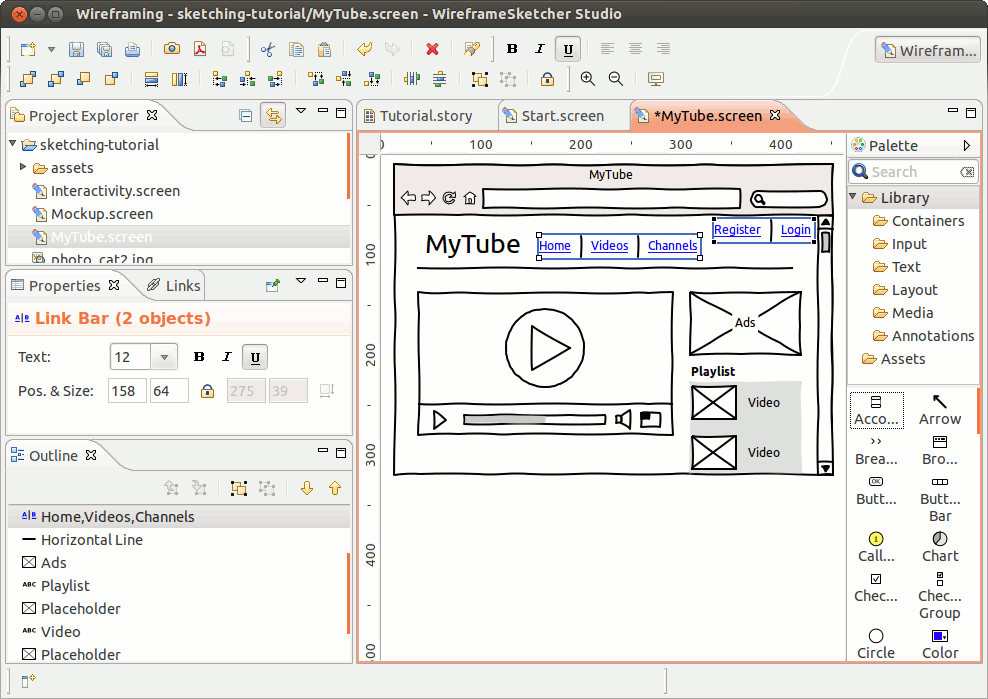

- #Wireframesketcher table install
- #Wireframesketcher table code
- #Wireframesketcher table download
- #Wireframesketcher table windows
This will download the latest build of NW.js in is one can run:
#Wireframesketcher table install
If we want to do it globally, we will run the following command: sudo npm install nw -globalĪlternatively, we can run the following command: sudo npm i nw -g If you have already installed npm, ensure that it's up to date: sudo npm install -gĪs I have already said, we can install packages with npm- for example, NW.js. It is also available as an APT package, so you can install it for Linux with the apt-get tools: sudo apt-get install npm
#Wireframesketcher table windows
So, you can find an installer for Windows or for macOS on the Node.js download page ( ). The npm tool is distributed together with Node.js. The npm tool will find the executable package among installed packages and run it. We can set various command-line tasks to refer any of the locally installed packages by name. Furthermore, npm is pretty handy as an automation tool. It not only downloads the package, it also resolves its dependencies and does it pretty smartly. So, when we need a package (library, framework, and module), we will check whether it's available in the npm repository and run npm to bring it into our project. It's a command-line utility connected with the corresponding online repository of packages and is capable of package installation, version management, and dependency management. Nowadays, Node Package Manager ( npm) is one of the most demanded gadgets in the web developer tool belt. Besides, the wireframes look nice in a sketchy style: It also has a rich mock-up gallery of stencils, widgets, icons, and templates that makes prototyping fast and easy. It allows you to sketch web, desktop, and mobile applications (just what we need). Here, I use an impressive, but affordable tool called WireframeSketcher ( ). Today, there are plenty of solutions on the market. As you know, drawing with a pencil on a paper is possible, but it is not the best way to create a wireframe what we need is a prototyping tool. It shows schematically, what the application does. Wireframe has no real graphics, typography, or even colors. Wireframe is a skeletal framework of the application that depicts the arrangement of the application's content, including UI elements and navigation system.

It would be easier to perceive it in a visual form, wouldn't it? Wireframes come in handy here. As a user, I can change the application language.As a user, I can maximize and restore the application window.As a user, I can minimize the application window.As a user, I can close the application window.As a user, I can open the folder containing the file with the system file manager.As a user, I can copy a file in the clipboard and paste it later in a new location.As a user, I can open a file in the default associated program.As a user, I can navigate through the filesystem.As a user, I can see the content of the current directory.You will have covered everything from planning, designing, and development to the enhancement, testing, and delivery of these apps.īy File Explorer, I mean a small program that allows navigating through the filesystem and performs basic operations on the files, which can be expressed with the following user stories: By the end of the book, you will have built four desktop apps. Generic UI components will be reused from the React MDL library. Next, you will create a screen capturer with NW.JS, React, and Redux.įinally, you will examine an RSS-reader built with TypeScript, React, Redux, and Electron. While developing the chat app, you will get Photonkit.
#Wireframesketcher table code
In addition you will learn to use the desktop environment integration API, source code protection, packaging, and auto-updating with NW.JS.Īs the second application you will build a chat-system example implemented with Electron and React. So you will practice the most exciting features of bleeding edge CSS and JavaScript. The book starts with a walk-through on building a simple file explorer from scratch powered by NW.JS. HTML5 desktop applications can be distributed across different platforms (Window, MacOS, and Linux) without any modifications to the code. Since it’s hard to simulate on a foreign platform, packaging and distribution can be quite platform-specific and testing cross-platform apps is pretty complicated.In such scenarios, web technologies such as HTML5 and JavaScript can be your lifesaver.

Building and maintaining cross-platform desktop applications with native languages isn’t a trivial task.


 0 kommentar(er)
0 kommentar(er)
